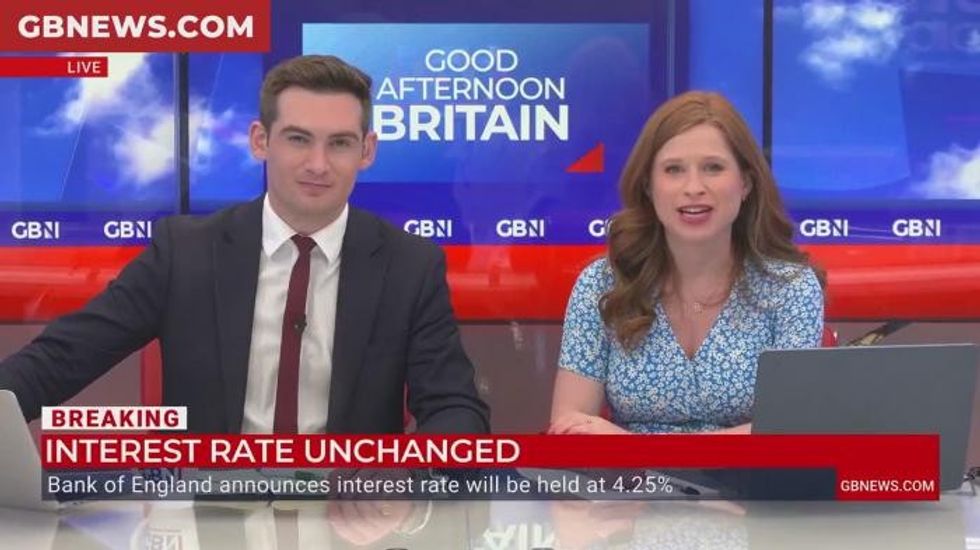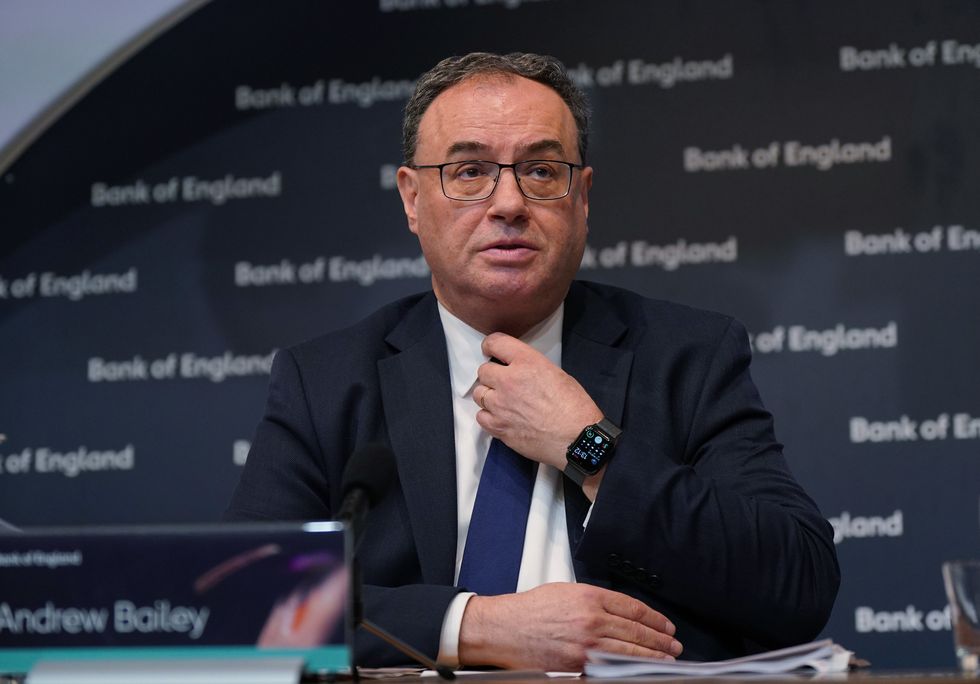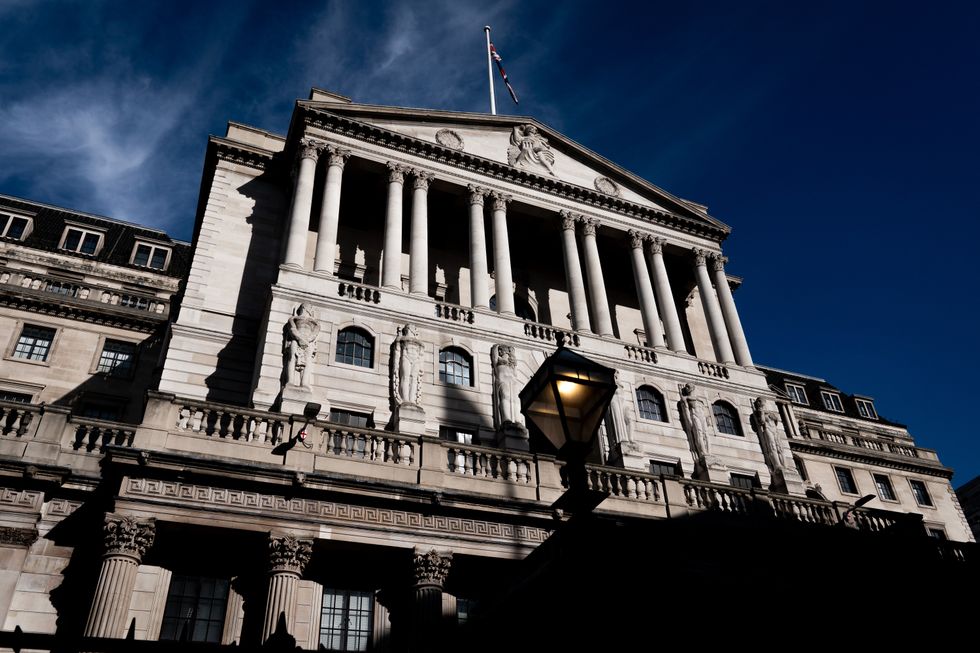Bank of England boss defends £150bn losses after Reform UK warns it's a 'systemic misuse of taxpayers' money'
The Bank of England is under fire over £150 billion in losses linked to its bond-selling programme, as taxpayer anger mounts and political pressure intensifies. Andrew Bailey has defended the central bank’s actions amid accusations from Reform UK of a "systemic misuse of taxpayers' money."Bailey responded to Deputy Leader of Reform UK Richard Tice's criticisms in a letter published yesterday, arguing that "the UK will keep the benefit of lower debt costs for considerably longer than other countries" due to the Quantitative Easing programme.Tice had written to Bailey earlier this month, challenging the Bank's bond-selling plans and its practice of paying interest on commercial banks' deposits at the central bank. Tice claimed these policies would unnecessarily burden taxpayers with costs running into tens of billions of pounds.The Bank currently pays interest on commercial banks' deposits at a rate of 4.25 per cent, matching the base rate. As the central bank raised rates from late 2021 to combat inflation, it has been paying higher average interest to commercial banks than it earns on its bond portfolio.Additionally, the Bank is frequently selling bonds acquired through QE at prices below their original purchase cost. The central bank's latest projections indicate total losses from bond sales will reach approximately £150 billion, with the Government liable for these costs under an existing indemnity agreement.Tice's letter specifically targeted these two aspects of Bank policy, arguing they represent an unnecessary drain on public finances at a time of economic pressure.Bailey countered these criticisms by highlighting that the Government had "issued much more long-term debt than other countries when interest rates were low and QE had flattened the yield curve", securing "a longer-lasting benefit in the form of lower debt costs".The governor emphasised that between 2013 and 2022, the Bank transferred £124 billion in profits from its QE programme to the Government. He argued that Tice had failed to consider the economic damage that might have occurred without QE intervention during the 2008 financial crisis and Covid-19 pandemic.Bailey wrote: "It is easy to forget the severe problems we faced with these shocks. Although the counterfactual is unknowable with any precision, most estimates indicate that QE provided very significant support to the UK economy, protecting both jobs and tax revenues."The Bank's quantitative easing programme began in response to the 2008 financial crisis, with central banks purchasing bonds to stabilise the global economy. The measures were later expanded during the Covid-19 pandemic.By increasing demand for bonds, central banks push up their prices and lower their yields. These reduced yields spread throughout the economy, theoretically encouraging household spending and business investment to support economic growth.At its peak, the Bank of England held nearly £900 billion in Government and corporate bonds. The central bank is now gradually reducing its balance sheet by selling bonds and allowing them to mature.Current plans involve reducing holdings at an annual rate of £100 billion through sales and natural maturity.

The Bank of England is under fire over £150 billion in losses linked to its bond-selling programme, as taxpayer anger mounts and political pressure intensifies.
Andrew Bailey has defended the central bank’s actions amid accusations from Reform UK of a "systemic misuse of taxpayers' money."
Bailey responded to Deputy Leader of Reform UK Richard Tice's criticisms in a letter published yesterday, arguing that "the UK will keep the benefit of lower debt costs for considerably longer than other countries" due to the Quantitative Easing programme.
Tice had written to Bailey earlier this month, challenging the Bank's bond-selling plans and its practice of paying interest on commercial banks' deposits at the central bank.
Tice claimed these policies would unnecessarily burden taxpayers with costs running into tens of billions of pounds.
The Bank currently pays interest on commercial banks' deposits at a rate of 4.25 per cent, matching the base rate. As the central bank raised rates from late 2021 to combat inflation, it has been paying higher average interest to commercial banks than it earns on its bond portfolio.

Additionally, the Bank is frequently selling bonds acquired through QE at prices below their original purchase cost.
The central bank's latest projections indicate total losses from bond sales will reach approximately £150 billion, with the Government liable for these costs under an existing indemnity agreement.
Tice's letter specifically targeted these two aspects of Bank policy, arguing they represent an unnecessary drain on public finances at a time of economic pressure.

Bailey countered these criticisms by highlighting that the Government had "issued much more long-term debt than other countries when interest rates were low and QE had flattened the yield curve", securing "a longer-lasting benefit in the form of lower debt costs".
The governor emphasised that between 2013 and 2022, the Bank transferred £124 billion in profits from its QE programme to the Government.
He argued that Tice had failed to consider the economic damage that might have occurred without QE intervention during the 2008 financial crisis and Covid-19 pandemic.
Bailey wrote: "It is easy to forget the severe problems we faced with these shocks. Although the counterfactual is unknowable with any precision, most estimates indicate that QE provided very significant support to the UK economy, protecting both jobs and tax revenues."
The Bank's quantitative easing programme began in response to the 2008 financial crisis, with central banks purchasing bonds to stabilise the global economy. The measures were later expanded during the Covid-19 pandemic.
By increasing demand for bonds, central banks push up their prices and lower their yields.

These reduced yields spread throughout the economy, theoretically encouraging household spending and business investment to support economic growth.
At its peak, the Bank of England held nearly £900 billion in Government and corporate bonds. The central bank is now gradually reducing its balance sheet by selling bonds and allowing them to mature.
Current plans involve reducing holdings at an annual rate of £100 billion through sales and natural maturity.








































